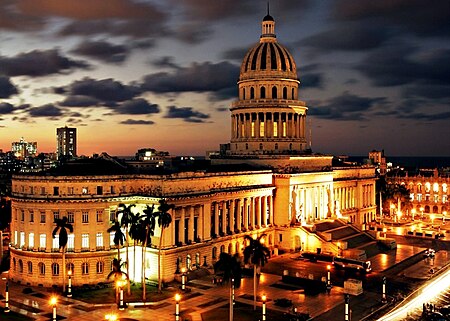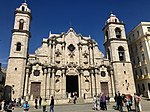Cuban Academy of Sciences

The Cuban Academy of Sciences (Academia de Ciencias de Cuba) is an official institution of the Cuban state, with headquarters in the National Capitol building in Havana. It is described as the oldest active national academy of sciences outside Europe. The Academy is with a national scope, independent and consultative in the area of science, and the successor of the former Royal Academy of Medicine, Physical and Natural Sciences of Havana, and is also attached to the Ministry of Science, Technology and the Environment. The Academy represents the fields of Agrarian and Fisheries Sciences, Biomedical Sciences, Exact, and Natural Sciences, Social Sciences and Humanities, and Technical Sciences. Its members are nominated by scientific research institutions, universities, scientific societies as well as various other national organizations.
Excerpt from the Wikipedia article Cuban Academy of Sciences (License: CC BY-SA 3.0, Authors, Images).Cuban Academy of Sciences
Paseo de Martí (Paseo del Prado), Havana
Geographical coordinates (GPS) Address Nearby Places Show on map
Geographical coordinates (GPS)
| Latitude | Longitude |
|---|---|
| N 23.135249 ° | E -82.359652 ° |
Address
Capitolio Nacional
Paseo de Martí (Paseo del Prado) 422
10200 Havana (Prado)
Havana, Cuba
Open on Google Maps










